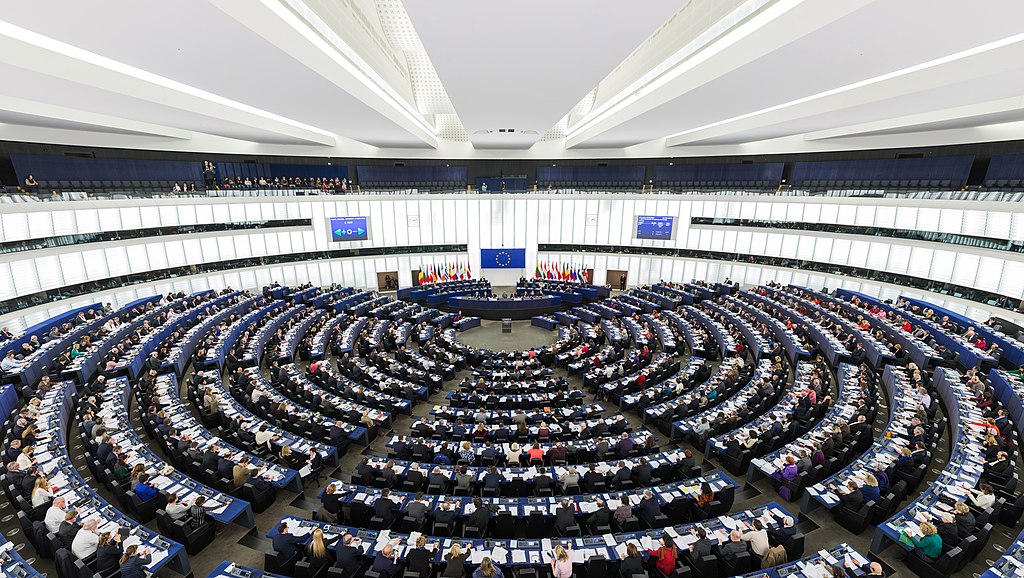The way that the European Union (EU) creates drug policy can seem unclear given its many levels of decision- and policymaking in the bloc. Here we uncover how EU drug policy is created, including how decisions on drugs are taken, whether drug policies are binding for Member States, and more.
To fully understand the current drug policy landscape, it’s necessary to give some context on the history of EU drug policy.
A brief history of EU drug policy
European drug strategies are fairly recent, with the first plan introduced in 1990. During the early stages of European integration, addressing illegal drugs could have been seen as a potential area for increased collaboration among national governments. However, the lack of consensus on the most effective way to tackle this phenomenon during the 1980s and early 1990s meant the EU withdrew from making judgements regarding the preference for one drug control method over another. Instead, drug policy was designated as an area of subsidiarity, meaning it was delegated to national decision-making.
It was only in 1995 that the European Commission drafted and adopted the European action plan to combat drugs 1995-99, which included efforts to coordinate international responses to drug trafficking, demand reduction (such as health education campaigns) and improve coordination of actions between law enforcement agencies to tackle the production and traffic of illegal substances.
Since then, there have been many iterations of European “drug action plans”. The current documents in place are:
- The EU Drugs Strategy 2021-2025, which is the highest level document which lays down the basic priorities which encompass drug supply and demand reduction, addressing drug-related harms, international cooperation, research, innovation, foresight, coordination, and governance;
- The EU Drugs Action Plan 2021-2025, which is more operational, outlining the roadmap for the implementation of the EU Drugs Strategy.
The EU Drugs Strategy and the EU Drugs Action Plan are developed by the Council of the EU, including Member States, with input from the European commission and informally from civil society. Although civil society organisations and communities are not formally consulted, they are allowed to comment on drafts.
These EU Drug Strategies guide the European drug policy system, outlining coordination and cooperation efforts, tentatively establishing common principles, goals and objectives for drug policy.
What are the main European institutions responsible for drug control?
Different institutions play a role in developing and approving EU drug legislation, as well as in monitoring and evaluating the implementation of EU drug policy. These include:
- The European Commission, which is responsible for monitoring and evaluating the implementation of the EU Drug Strategy, as well as implementing some of the action -but not all – in the EU Drug Strategy and the Action Plan. The Commission is responsible for producing legislation and laws on drug-related matters, including funding for interventions, regulating, and overseeing the EU Drugs Agency.
- The Council of the European Union, which is the main decision-making body composed of representatives of all Member States. It co-produces legislation with the European Parliament, and is the sole decision-maker for international drug policy and strategy documents. The Council is also a space for knowledge sharing and cooperation between Member States.
- The European Parliament, which is the only direct-elected body that approves and oversees the implementation of drug control legislation.
- The European Monitoring Centre for Drugs and Drug Addiction (EMCDDA), which provides evidence-based information and analysis on the drug situation in Europe, as well as providing technical assistance and training to EU member states on drug-related issues. This will become the EU Drugs Agency in 2024 with a new mandate.
- Europol, the law enforcement agency that supports EU member states in combatting organized crime, including drug trafficking.
- Frontex, which is responsible for coordinating European border management and maritime security, including combatting drug trafficking, dependent from Directorate-General for Migration and Home Affairs.
In addition to the above, the EU also has other institutions that are involved in drug control, such as the European Union Agency for Criminal Justice Cooperation (Eurojust) and the European Union Agency for Law Enforcement Training (CEPOL).
What does the EMCDDA do?
The European Monitoring Centre for Drugs and Drug Addiction (EMCDDA) is the reference point on drugs and drugs addiction information in Europe. However, the EMCDDA has a double nature as a health and law enforcement body; this has meant its mandate is unclear, as it both monitors drug markets yet recommends market-altering interventions, from harm reduction to law enforcement measures.
Moreover, the EMCDDA does not directly regulate drugs in the EU. Instead, it supports EU drug policy-making processes by providing European-level evidence, as well as continental analysis on drug markets through data collection at the national level.
The EMCDDA also provides technical assistance and training to EU member states on a range of drug-related issues. This includes helping member states to develop and implement national drug policies and strategies, provide briefings summarising research on drug-specific topics, and evaluate the effectiveness of drug interventions.
The EMCDDA also produces the annual European Drug Report which provides a comprehensive overview of the drug situation in Europe, including trends in drug use, trafficking, and production. Their Drug Policy Profiles provide an in-depth analysis of the drug policies of individual EU member states. The Observatory on Drugs and Addictions (ODA) is a web-based platform that provides access to a wide range of data and information on drugs and drug addiction.
The EMCDDA’s transformation into the EUDA in July 2024 will bring with it a new mandate for the organisation. Among other tasks, the new agency will develop health and security threat assessment capacities, issue health alerts, establish forensic laboratories and “play a stronger international role and support the EU in drug policy at multilateral level”. While it is still unclear what this may mean in practice, the final point highlights it may play a bigger role in harmonising European drug policy, while maintaining a lot of its market monitoring capacities.
Are EU drug policies legally binding?
Not all EU drug policies are binding, meaning that Member States are not obliged to implement them. For instance, the EU Framework Decision, implemented in 2004, was binding for Member States as it was part of the Nice Treaty. The nature of the Framework Decision encompasses stringent measures against the production, distribution, sale and possession of drugs. This has constituted a real obstacle to cannabis regulations in the continent as the decision’s broad and uniform approach to drug-related offenses can hinder the flexibility needed by Member States to establish more nuanced and progressive regulations.
Moreover, the Framework Decision’s provision excludes certain conduct such as cannabis-related activities from its scope when committed exclusively for personal consumption; this has meant that some countries have been able to decriminalise possession of the drug.
Discussions about a potential harmonisation of European drug policy are common. For instance, coordinated decision-making would better respond to transnational drug use patterns as well as trafficking which, by its very nature, occurs across borders. With the flow of drugs in Europe passing through countries with relative ease, a harmonised response would best address trafficking and drug-related harm concerns.
However, the willingness to increase harmony between countries’ drug policies while giving up national decision-making powers to a higher European authority is often dependent on national governments’ political interests. With potential rifts between European policy-making appearing in other policy areas, greater harmonisation may be a greater challenge now than before.

How can the EU ensure Member States follow its legislation?
EU policymakers must influence Member States to ensure there is some level of consensus across countries’ drug policies. This is done through EU legislation (that member states then sign onto) or by influencing nation-level policies through “soft convergence”.
The EU encourages policy harmonisation through financial and technical assistance, in turn helping implement EU drug legislation. This “soft power” approach includes funding for training programmes, drug monitoring equipment, and international expertise; or by promoting best practices in drug prevention, treatment, and enforcement to member states through information exchanges, study visits, and other initiatives.
The EU can also impose sanctions on Member States that fail to comply with EU drug legislation, mostly as financial penalties. Appealing to non-European threats of global criminal networks and drug trafficking, which is inextricably linked with xenophobic concerns, is also a commonly used tool to encourage greater cooperation. Ultimately, the EU encourages compliance, cooperation and dialogue through regular meetings between policymakers, as well as through the sharing of information and resources.
Future directions for EU drugs including EU Drug Strategy 2021-2025
The future of EU drug policymaking, as outlined in the EU Drugs Strategy 2021-2025, takes a balanced approach to the drug problem, focusing on prevention, treatment, and enforcement. It also recognises the need to address underlying social and economic factors that contribute to drug use.
The strategy outlines specific objectives, such as:
- Strengthening security to reduce the supply of drugs and tackling organised crime groups, trafficking, and illicit markets.
- Reducing violence levels using law enforcement and intelligence, improving customs risk analysis, and enhancing border control.
- Developing a comprehensive drug program that promotes wellness, especially among young people, delaying, preventing, treating drug use with evidence-based strategies including family-based interventions, combatting drug harm through needle programs and testing, and implement supervised consumption.
- Improving international cooperation including governments, non-governmental organisations (NGOs) and the private sector, promoting research and innovation.
Closer coordination will consistently be a topic for European drug policymaking. As researcher Eamon Doherty has commented: “[the drug problem] is an issue on which we must all cooperate together effectively or face up to the consequences”. While greater international cooperation would not only strengthen the European border and associated punitive measures, it could also improve the exchange of harm reduction practices and support local initiatives with European funds.
The evolution of European drug policy highlights the careful balance between influence, an acknowledgement of global drug market forces, and the need to respect national sovereignty of Member States. While Member States remain the central decision-makers on their domestic drug polices, the EU wields tremendous influence through standard-setting, financial incentives, and other forms of soft power.
The upcoming transformation of the EMCDDA into the EUDA may be a significant move to further expand EU influence in drug policymaking. This may be a double-edged sword: for countries with more repressive drug policies, harm reduction interventions may find their way in. Similarly, countries with more liberal drug control systems may have to temper innovative approaches to comply with European moderate standards. As Europe moves towards a more securitised approach to drug policy, the latter may become more and more common.
Greater integration may create an opportunity for evidence-based public health interventions to be taken seriously, as they address many of the underlying socioeconomic issues of problematic drug use. The emphasis on human rights and social inclusion themes in the latest EU Drug Strategy offers hope for positive reforms, and hopefully a path towards more harm reduction rather than criminalisation.


